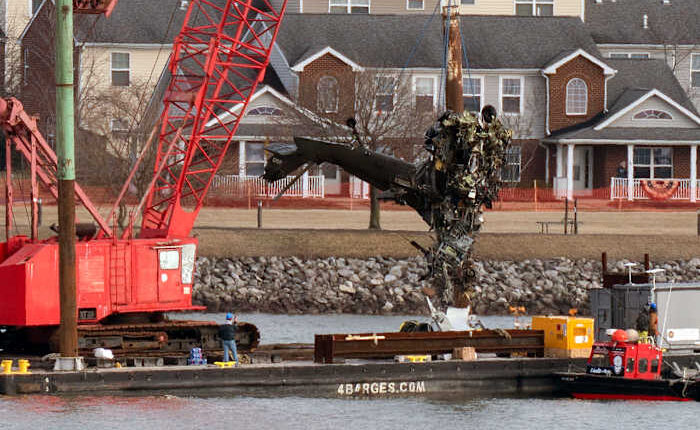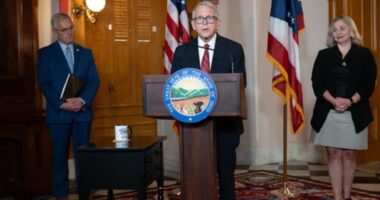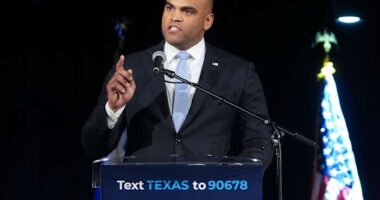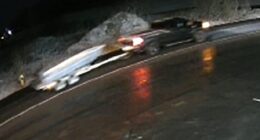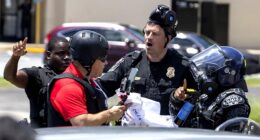
Following a recent altercation in the tower and a concerning near-miss incident, air traffic controllers at Washington’s Ronald Reagan National Airport are being offered crisis counseling and increased supervision. These events come just two months after a tragic midair collision claimed the lives of 67 individuals, involving a passenger jet and an Army helicopter.
In response to these incidents, the Federal Aviation Administration announced plans to assess whether the current volume of arrivals at Reagan Airport may be excessive. Recognizing the stress faced by controllers managing the high traffic flow in and out of the airport, the agency has pledged additional assistance while investigations by Congress and the National Transportation Safety Board into the January crash are ongoing.
During a Senate Commerce Committee meeting, Senator Ted Cruz expressed concerns over the sequence of errors following the fatal crash, highlighting the challenges within the nation’s airspace. Cruz criticized the Army for withholding a memorandum outlining its flight protocols and warned that any future tragedies resulting from collisions near Reagan Airport would be attributed to the Army’s actions.
The FAA’s decision to bring in crisis counselors followed the Thursday arrest of a 39-year-old employee from Maryland on suspicion of assault and battery after the control tower fight, the Metropolitan Washington Airports Authority confirmed in a statement.
No details were released about the altercation. The FAA said the employee was put on administrative leave while the fight is investigated.
The next day, a Delta passenger jet had to take evasive action as it took off from Reagan because of the proximity of a flight of four Air Force jets involved in a flyover at Arlington National Cemetery. The incident continued a pattern of close calls that the NTSB has said went on for years around the airport as commercial flights repeatedly got dangerously close to helicopters and other aircraft.
The FAA said Wednesday that it was reviewing the “current arrival rate of aircraft per hour, which is disproportionately concentrated within the last 30 minutes of each hour.”
After the crash, the arrival rate at the airport fell to 26 an hour while crews worked to recover the wreckage of the American Airlines jet and Army Black Hawk helicopter from the Potomac River. But the acting head of the FAA said at a hearing last week that arrivals are now back up to 30 an hour and could go up to 32. Now the agency is rethinking that.
To help with the stress, the FAA plans regular wellness checks of its staff at Reagan as well making counselors available. It wasn’t immediately clear if the agency took that step right after the Jan. 29 crash. The number of supervisors will increase from six to eight, and the agency will evaluate whether it has enough controllers working each shift.
The union that represents air traffic controllers at Reagan and airports across the country declined to comment on the situation.
During Wednesday’s hearing, Cruz threatened the Army with a subpoena if it did not give the committee a copy of its memo spelling out when its aircraft are allowed to fly without a key system that broadcasts their location to other aircraft turned on.
The fact that system wasn’t activated in the Black Hawk that collided with the passenger jet is a key concern investigators have highlighted. With the location system turned off, the tower had to rely on radar for updates on the helicopter’s position that only came once every four seconds instead of every second before the crash.
“It begs the question, what doesn’t the Army want Congress or the American people to know about why it was flying partially blind to the other aircraft and to the air traffic controllers near DCA (Reagan airport)?,” Cruz said. “This is not acceptable.”
The Army didn’t immediately respond to an inquiry Wednesday about the memo. The U.S. Army’s head of aviation, Brig. Gen. Matthew Braman, told the Senate Commerce Committee last week that he wasn’t sure if he could provide the memo because it is part of the investigation, but the head of the NTSB assured him that would be okay.
The January crash was the nation’s deadliest plane crash since November 2001. But a series of other crashes and near misses in the months after fueled worries about air travel even though it remains safe overall.
___
Associated Press writers Tara Copp and Lisa Leff contributed to this report.
Copyright 2025 The Associated Press. All rights reserved. This material may not be published, broadcast, rewritten or redistributed without permission.
